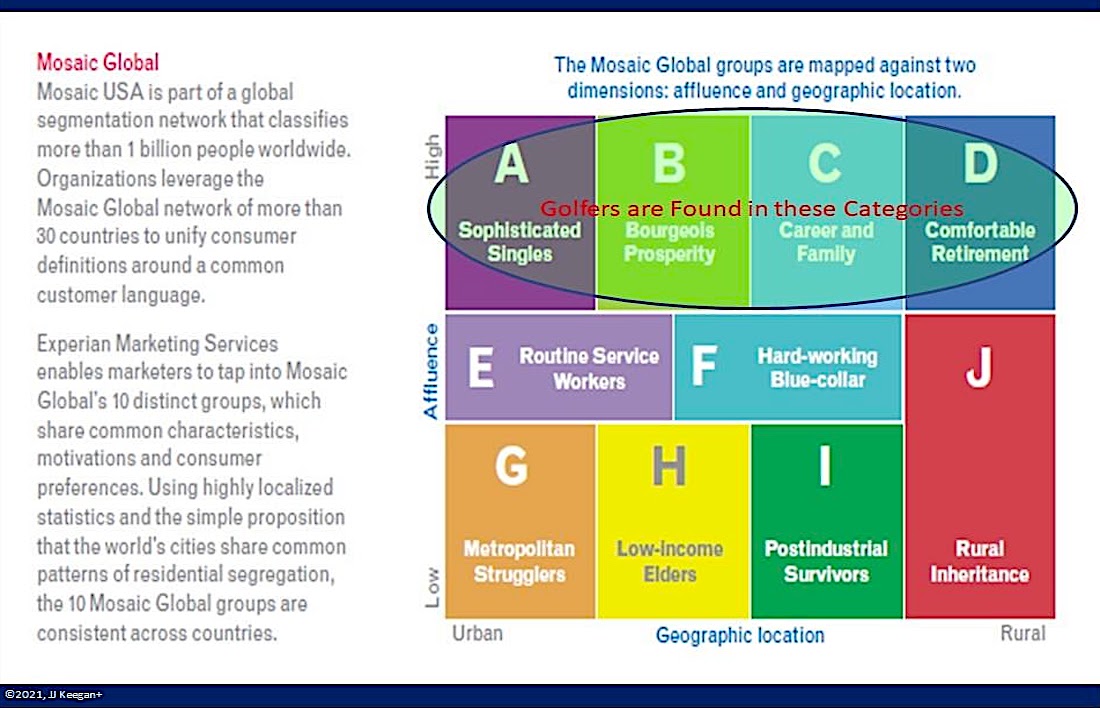Two Numbers
By JJ Keegan, Reality Mentor & Envisioning Strategist, JJKeegan+
How many Starbucks stores are within a 10-mile radius of your golf course? If the answer is zero, our belief is your golf course might be financially challenged unless you are a destination resort.
In the numerous geographic local market studies performed for clients throughout the U.S., we have observed the number of Starbucks stores located within 10 miles is an accurate predictor of prosperity for a golf course. These include places like the south of I-20 and inside the I-285 loop in Atlanta, GA., or even in a rural area like Morganton, NC. There are no Starbucks in those locations, and we usually find that the golf courses are low-end, entry-level facilities where generating enough revenue to fund capital improvements is a challenge.
Starbucks selects locations based on the attitudinal behavior of consumers within a defined geographic radius. Known as the MOSAIC profile, Experian classifies all individuals within ten designated groups, as shown below:

The Mosaic Global profile assigns individuals to one of ten categories: career and family, bourgeois prosperity, sophisticated singles, comfortable retirement, hard-working blue-collar, routine service workers, low-income elders, metropolitan strugglers, postindustrial survivors and rural inheritance.
The Experian MOSAIC profile represents a household-based consumer lifestyle segmentation that empowers marketers with the insights needed to anticipate the behavior, attitudes and preferences of their most profitable customers and how to reach them in the most effective channels with the best messages.
To help a golf course management team quickly assess if their facility is consistent with the attitudinal behavior of the residents in their competitive market, we developed the Predictive Index™ that details the correlation of the Mosaic Profile and the slope rating, as presented here: